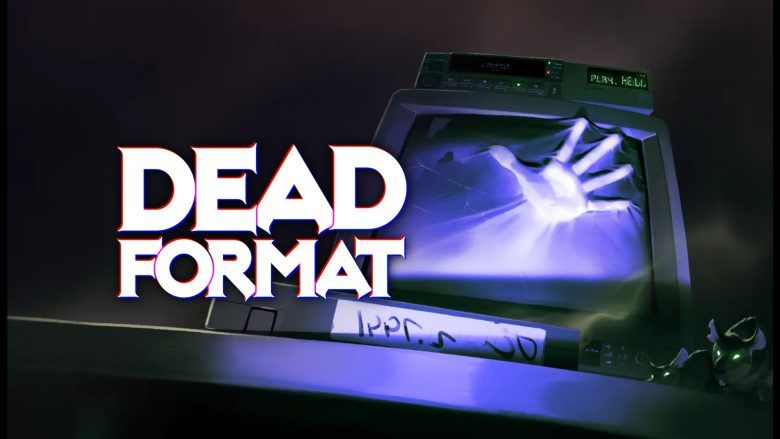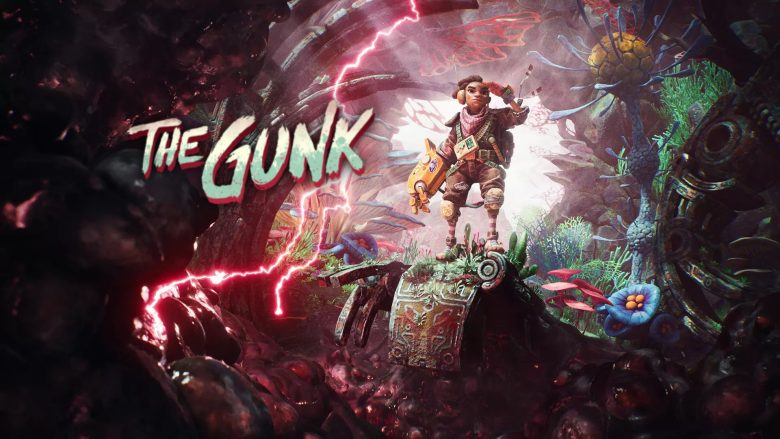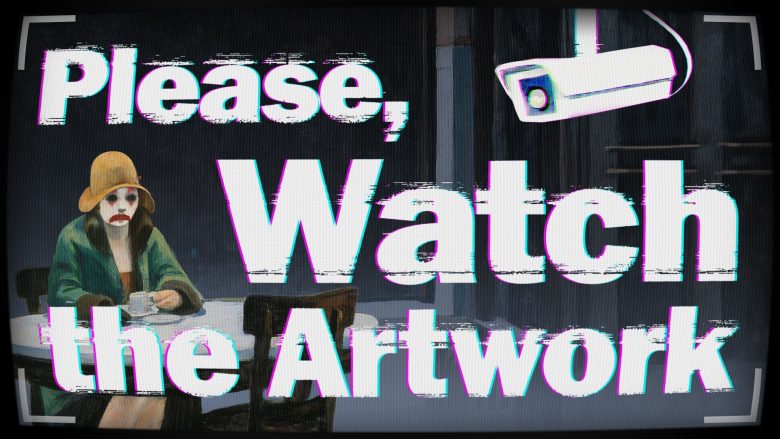Fear Beyond the Fourth Wall.
Layers of Fear (2023) is far more than a mere remake; it stands as an ambitious and deliberate endeavor to deliver the definitive edition of a horror narrative that has left an indelible mark on the gaming landscape in recent years. Released on June 15, 2023, for PC, PlayStation 5, Xbox Series X/S, and macOS, Bloober Team, with technical support from Anshar Studios, presents an anthology that reimagines, updates, and seamlessly intertwines the saga’s previous entries, enriched by two brand-new episodes: The Final Note and The Writer.
The Polish studio’s mission is to reconsider the narrative universe as a cohesive whole, addressing the fragmentation evident in earlier versions. The result is a sophisticated work—visually cutting-edge and conceptually ambitious—delivering a sensory, emotional, and philosophical experience unlike any other, where video game artistry, narrative depth, and atmospheric immersion converge.
It must be emphasized from the outset: Layers of Fear (2023) is not merely a game to be “played,” but an experience to be fully lived. It is a creation that seeks to provoke profound reflections on the psyche, art, memory, and obsession. It is not designed for mere entertainment, but to evoke, insinuate, and unsettle.
This is achieved through transformative environments that shift before the player’s eyes, paintings that come alive, and sounds and voices that hint at far more than they reveal. Above all, it tells the haunting stories of broken artists trapped within their own minds and memories, spiraling into guilt and despair.


Bloober Team: The Architects of Fear
At the core of this project is Bloober Team, a Kraków-based Polish studio founded in 2008 by Piotr Babieno and Peter Bielatowicz. Over time, the studio has carved a distinct niche within the psychological horror genre, known for its deeply narrative-driven and stylistically ambitious games. Despite early hurdles, Bloober Team established its reputation and garnered critical acclaim with the release of Layers of Fear in 2016, followed by acclaimed titles such as Observer (2017), Blair Witch (2019), and The Medium (2021).
With Layers of Fear (2023), the team achieved a new artistic and technical milestone: a haunting, dreamlike, and often unsettling atmosphere that emphasizes psychological exploration, mood, and the subconscious rather than relying on conventional horror tropes like monsters or combat. Bloober Team’s work is frequently likened to cinematic experiences, evoking the styles of filmmakers such as David Lynch, Stanley Kubrick, and David Cronenberg. Their aesthetic sensibilities draw equally from cinema and Gothic literature, while their gameplay mechanics are deliberately minimalistic, allowing environmental storytelling and sensory immersion to take center stage.
Over the years, Bloober Team has demonstrated consistent growth in both creative ambition and technical expertise, attracting the attention of major publishers and investors. In 2021, Tencent acquired a minority stake in the studio, bolstering its financial foundation and expanding its capacity for growth. The studio’s most significant breakthrough, however, came with the official announcement of the Silent Hill 2 remake, developed in partnership with Konami—a landmark achievement that positions Bloober Team among the few rising European studios with international acclaim in the horror genre.
A hallmark of Bloober Team’s identity has been its commitment to telling intimate, unsettling stories often inspired by real events, taboo subjects, and introspections on artistic identity. This approach has polarized critics and audiences alike but has undeniably established the studio as a cornerstone of contemporary horror alongside renowned developers such as Red Barrels (Outlast) and Frictional Games (Amnesia, SOMA).
For Layers of Fear (2023), Bloober Team collaborated with fellow Polish studio Anshar Studios, which contributed across several key aspects—including level design, audio refinement, the transition to Unreal Engine 5, and optimization for next-generation consoles.


More Than the Plot Alone
As previously mentioned, Layers of Fear (2023) is far more than a mere retelling of the original games’ plots; it constitutes a complete reimagining of the narrative framework, intricately reconnecting and reinterpreting Layers of Fear (2016), its Inheritance DLC, Layers of Fear 2 (2019), and the new exclusive chapters, The Final Note and The Writer. The game thus unfolds as a narrative mosaic, where each episode serves as a node within a wider web: the act of artistic creation as a profound form of psychological torment. The story opens with The Writer, a brand-new character—a solitary woman confined within a lighthouse, devoted to writing and perfecting her manuscript. This setting, symbolically suspended between land and sea, reality and the surreal, functions as a metatextual filter. It is through the Writer’s typing that the other stories—those of The Painter and The Actor—are brought to life.
The first and central episode is The Painter, the familiar tale of a cursed painter, a brilliant yet deeply troubled artist who returns to his decaying Victorian mansion to complete his magnum opus. The house itself is a ruin, haunted by dreamlike visions, architectural distortions, and symbols of personal trauma. As the narrative unfolds, the player uncovers dark secrets from his past: a turbulent relationship with his musician wife, his daughter’s illness, and the gradual deterioration of his sanity. The protagonist spirals into delirium, manifested through paintings that shift form, rooms that morph before his eyes, and increasingly unsettling inner monologues. The Inheritance DLC is seamlessly integrated into this chapter, offering a poignant perspective from the now-adult daughter, who returns to her father’s mansion to confront her memories and grapple with whether she can forgive him.
The second episode, The Actor, adapted from Layers of Fear 2, plunges players into an abandoned ocean liner. Here, the protagonist is an actor summoned by an enigmatic director to star in a mysterious film. This labyrinthine and unstable vessel serves as a perfect stage where reality and fiction intermingle. The actor’s journey evolves into a profound exploration of identity: who is he truly? Is he merely playing a role, or living his own story? Themes of duality, control, childhood trauma, and media manipulation resonate powerfully, alternating moments of introspection with claustrophobic scenes fraught with symbolic tension.




The Final Note is a wholly original addition, setting itself apart from the previous titles. In this chapter, the player steps into the role of the Painter’s wife. This shift in perspective partially upends the entire narrative: what initially appeared as the portrait of a tormented genius unfolds into a family drama fraught with misunderstandings, silent suffering, and relational decay. The chapter enriches the emotional complexity of the wife’s character, who had often been confined to a passive or spectral role.
At last, we reach The Writer, the final chapter that intricately weaves together the game’s overarching narrative. The lighthouse gradually evolves from a sanctuary into a theater of truth, revealing that the author herself is a character enmeshed within the very stories she endeavors to write. This invites the player to question not only the characters but also the fundamental nature of the narrative itself: who is telling which story, and for what purpose?
The narrative of Layers of Fear (2023) is crafted to be “experienced” rather than simply “understood” in a conventional sense. In this regard, it resonates more as a literary or theatrical work than a straightforward, linear script. Each segment contributes a vital piece to the broader puzzle, yet many questions remain deliberately open, and numerous events are open to multiple interpretations depending on the player’s choices and personal perspective.




A Deep and Emotionally Resonant Narrative
Narrative stands as one of the most intricate and compelling pillars of the game, clearly distinguishing it from the vast majority of horror titles on the market. Here, the story eschews conventional linearity: the developers aim to immerse the player in a metanarrative experience that probes the fragile boundaries between reality and fiction, memory and oblivion, creation and destruction. It is a story built in layers—aptly mirroring the game’s very title—where each narrative stratum overlaps and intertwines with the others, cultivating a profound sense of thematic and emotional depth.
The writing is rich in symbolism and deeply evocative. The scattered texts the player uncovers function as fragmented puzzle pieces, each word laced with ambiguity and open to multiple interpretations. This narrative technique fosters active engagement, turning the player into both investigator and interpreter, compelled to trace connections, reconcile contradictions, and piece together disparate truths.
As we delve deeper, the game guides us through the haunted corridors of traumatic memory and psychological repression, portraying characters ensnared by their obsessions and haunted by past events that manifest as distorted visions and surreal environments. From the Victorian painter’s house, to the forsaken ocean liner, to the solitary lighthouse—each setting acts as a psychic projection of the protagonists, a mental extension that blurs the line between perception and reality.
One of the game’s most striking narrative devices is its use of metanarration. The story becomes self-aware—it reflects on the nature of storytelling itself, and on the act of artistic creation as both a torment and a compulsion. The Writer is not merely a narrator of others’ tales; she is a figure caught in the process of authorship, contemplating her own voice and the transformative power of the written word. In this light, Layers of Fear (2023) transcends the genre of psychological horror, becoming a meditation on narrative, authorship, and the creative medium itself.
Symbolism permeates every facet of the game’s world. The paintings—central to the narrative of the original chapter—embody more than artistic expression: they reflect the protagonist’s obsessive tendencies, his refusal to accept reality, and the crushing burden of guilt. The shifting architecture of the environments underscores the fragility of the mind and the progressive descent into psychological fragmentation. In the Actor’s arc, masks, shadows, and mirrors evoke themes of identity and duality, while the lighthouse in the Writer’s chapter becomes a beacon of guidance amid a sea of uncertainty and self-doubt.
Narratively, the game is intentionally non-linear and fragmented. Each chapter can be experienced as a self-contained story, yet only when the full picture emerges does a richer, more layered understanding unfold. This structure may prove disorienting for players seeking a straightforward plot, but it generously rewards those who surrender to the game’s atmosphere and emotional resonance. The narrative unfolds through quiet moments, isolation, and subtle revelations—none offering concrete answers, but all inviting introspection.
Even the narrative voice—at times present, absent, or fractured—is channeled through the protagonists themselves,
through cryptic monologues and disquieting dialogues that intensify the sense of estrangement. The game never claims to offer definitive truths; instead, it embraces ambiguity, disquiet, and subjectivity.
In the end, it is up to the player to interpret the ending.


Top-Tier Art Design
What immediately stands out in Layers of Fear (2023) is, without question, its technical brilliance—a clear and confident evolution from the series’ previous installments. With this new entry, Bloober Team fully embraces the capabilities of Unreal Engine 5, leveraging its next-generation tools to deliver a visually stunning and immersive experience. The result is a game marked by extraordinary graphical fidelity, particularly in the intricacy of its 3D models, dynamic global illumination, and textural richness.
At the heart of this leap lie two pivotal technologies: Nanite and Lumen. The former enables unprecedented polygonal density without sacrificing performance, while the latter introduces a real-time, fully dynamic global lighting system. Together, they craft environments of striking atmospheric depth—shifting, breathing spaces that evolve fluidly before the player’s eyes, all sustained by a remarkably smooth and stable framerate. It’s a genuine visual triumph.
The game’s art direction is equally remarkable, reflecting a meticulous aesthetic sensibility that draws from Expressionist, Surrealist, and at times Gothic influences. Its decadently detailed environments—whether the Victorian painter’s crumbling estate or the eerie halls of an abandoned transatlantic liner—evoke a powerful sense of unease and psychological tension. Textures are often deliberately distorted or fragmented, especially during the most hallucinatory sequences, underscoring the protagonists’ fractured psyches.
The environments themselves are in constant flux: elongating walls, warping paintings, and shifting perspectives imbue the world with a surreal, nightmarish quality.
Character models strike a balance between realism and subtle stylization, amplifying emotional nuance and reinforcing the narrative’s dramatic weight. Notably, the protagonist’s hands—the primary medium of interaction—are rendered with particular care, becoming a kind of psychosomatic extension of the player, linking body, mind, and world in a single expressive gesture.
Further deepening the visual language is real-time ray tracing, which adds soft lighting, naturalistic shadows, and authentic reflections, all of which intensify the game’s oppressive and melancholic ambiance.
The material rendering—from splintered woodgrain to corroded metal—is executed with remarkable precision, seamlessly enhanced by the engine’s dynamic lighting, contributing to a world that feels texturally alive and tactile.
Technically, Layers of Fear has been expertly optimized for new-generation platforms, offering native 4K HDR support and a consistently fluid 60 FPS performance.
Lastly, the user interface is purposefully minimalist, granting full prominence to the game’s visual storytelling. Interactive elements are discreetly and harmoniously integrated, ensuring immersion remains unbroken and allowing the emotional weight of the narrative to resonate without distraction.


Immersive sound design
Equally integral to the game’s immersive and unsettling atmosphere as its technical prowess is its sound design, which stands as a foundational pillar—so much so that it feels almost like a character in its own right. Bloober Team has meticulously crafted a soundscape and musical score that transcend mere accompaniment, instead enriching and defining the psychological and narrative fabric of the experience, orchestrating emotions and tension with symphonic precision. Ambient noises, whispers, distorted echoes, and natural sounds coalesce to form a richly textured auditory environment, evocative of solitude, madness, and uncertainty. The extensive use of 3D spatial audio allows sounds to move fluidly around the player, producing a heightened sense of immersion that amplifies suspense and a persistent undercurrent of menace. The experience of entering a room to hear a whisper from behind a closed door or a sudden rustle nearby elicits chills even in moments of seeming tranquility.
The soundtrack is composed of original pieces specifically crafted for the game, predominantly ambient, minimalist, and orchestral works that unfold gradually, cultivating a mounting sense of unease. Musical themes shift according to the narrative’s progression and the character’s state, oscillating between delicate passages and unsettling melodies that mimic the rhythm of a heartbeat or the strain of labored breathing. Furthermore, the music often presages unfolding events, hinting through sonic cues at imminent danger or psychological unraveling. Particularly remarkable is the dynamic interplay between sound and environment—the audio system is not a collection of static effects but a responsive entity that adapts to player actions and environmental changes. For instance, footsteps on varying surfaces produce distinct auditory signatures that mingle with distant reverberations or the whisper of wind, engendering a profound sense of realism and spatial authenticity. Even silence becomes a potent instrument of tension: prolonged quietude, marked by an almost complete absence of sound, intensifies feelings of isolation and vulnerability, preparing the player for ensuing moments of auditory terror.
This masterful control of audio pacing is among the core reasons Layers of Fear (2023) achieves such a compelling and immersive impact.
Finally, the game is further elevated by the performances of professional voice actors, whose emotive delivery imbues the characters with deep vulnerability—seamlessly shifting from subdued melancholy to anguished screams and eerie whispers, enhancing the emotional resonance throughout the experience.


Minimalist gameplay built on solid mechanics
The gameplay marks a refined evolution from earlier entries in the series, while remaining firmly anchored in its pillars of exploration, narrative engagement, and sensory immersion. At its heart lies a first-person exploration system, granting players the freedom to navigate richly detailed environments, meticulously crafted with exceptional artistic precision. The level design is intentionally labyrinthine and mutable, a visual and spatial reflection of the protagonists’ unstable psychological states. Corridors and rooms may shift unpredictably, giving rise to optical illusions and architectural distortions that disorient the player and intensify a persistent sense of claustrophobia and unease.
This design transforms exploration into not merely a spatial endeavor, but a psychological challenge as well. Progress depends not only on physical navigation, but on the player’s ability to interpret symbols, decode signals, and make sense of spatial anomalies in order to gradually unravel the story’s layered narrative.
Interaction with the environment is both rich and multifaceted. Players can collect objects, read documents, manipulate lights, open drawers, examine paintings, and study various artifacts—all of which contribute meaningfully to the narrative and gradually unveil the underlying lore. The level design invites attentive observation, rewarding those who scrutinize details, as many clues are subtly embedded within objects or revealed through environmental shifts.
Another hallmark of the experience is its environmental puzzle design, which strikes a balance between moderate difficulty and narrative cohesion. These puzzles, often centered on artistic symbols, mechanical contraptions, or object-based logic, are elegantly integrated into the gameplay, never interrupting the flow of storytelling. Often, they unfold amidst disturbing events or startling apparitions, enhancing tension without resorting to overt action.
As previously mentioned, the game forgoes combat and direct action mechanics entirely. The sense of threat emerges not from tangible enemies or conventional survival systems, but from the environment itself, and from a story steeped in psychological dread and uncertainty. The horror is thus more existential than physical, drawing strength from what is unseen, ambiguous, and unknowable.
A subtle yet notable innovation in this installment is the inclusion of a narrative branching system, albeit modest in its scope. Certain choices—whether in how players interact with objects or interpret specific moments—can shape the perception of events or lead to slight variations in the outcomes of specific story arcs. However, this mechanic remains secondary to the experience, with the focus remaining squarely on atmosphere and narrative depth, rather than broad gameplay divergence.
The user interface is intentionally minimalist and non-intrusive. The cursor appears only when needed, and interactive elements are subtly highlighted with a faint glow, offering gentle guidance without disrupting immersion. The control scheme is likewise streamlined and intuitive, ensuring seamless accessibility for all players.
In terms of pacing, the developers embrace a slow, contemplative rhythm, allowing for reflective moments of silence to coexist with sequences of mounting tension. This careful tempo nurtures a gradually intensifying atmosphere, one that relies not on gratuitous jump scares, but on a sustained, oppressive sense of unease.
A particularly effective innovation is the way the game leverages haptic feedback (on next-gen consoles) and responsive controller integration, delivering subtle vibrations that synchronize with ambient sounds or environmental transitions, thereby enhancing the player’s sensory immersion and deepening emotional engagement.


Split reception
Layers of Fear (2023) stands as a title that has polarized both critics and audiences, largely due to its striking stylistic and narrative choices. While it has been widely commended for its artistic ambition and atmospheric depth, it has also drawn criticism for certain structural weaknesses that may hinder the overall gameplay experience.
Among the most celebrated aspects is the game’s capacity to build a dense, unsettling atmosphere without resorting to clichéd horror tropes. Its psychological narrative, metanarrative layers, and thematic complexity are viewed as a compelling effort to elevate the medium, inviting players into a more thoughtful and intellectually engaging experience. Numerous critics have noted the game’s capacity to evoke emotional investment, fostering a lingering sense of discomfort and a slowly mounting tension that crafts a more nuanced and enduring form of horror than that found in traditional genre entries.
Technically, the game is met with praise for its high-quality visuals, meticulously designed environments, and exquisite attention to detail. The artistic presentation and soundscape are integral in shaping an immersive and captivating experience. The deployment of dynamic lighting, realistic reflections, and fluid animations represent a marked improvement over prior installments.
Nonetheless, the gameplay has attracted some critique for its deliberate pacing and perceived lack of challenge. The absence of combat mechanics and a limited range of interactive elements have led some players to regard the experience as overly passive—reminiscent more of a “walking simulator” than a fully realized interactive horror game. Moreover, the non-linear, fragmented narrative structure, while appealing to enthusiasts of complex storytelling, may prove disorienting and less accessible to those favoring a more direct and coherent narrative.
Layers of Fear
PRO
- Deep and immersive psychological atmosphere, masterfully creating an environment rich in tension and unease, thanks to exceptional sound design, refined graphics, and a setting that flawlessly reflects the characters’ fragmented mental states;
- Bold, non-linear, and fragmented narrative structure that invites deep reflection and personal interpretation;
- Exceptional sound design, a standout feature, with original compositions that skillfully modulate tension and ambient effects that intensify feelings of isolation and discomfort;
- Impressive art design, characterized by a high level of detail and realism, with environments that feel alive and constantly evolving;
- A holistic sensory experience that continuously engages and captivates the player on multiple levels.
CON
- The minimalist gameplay may come across as repetitive or dull for those seeking a more dynamic and varied experience;
- The non-linear narrative can occasionally be complex and ambiguous, potentially leading to confusion and reducing player immersion.











